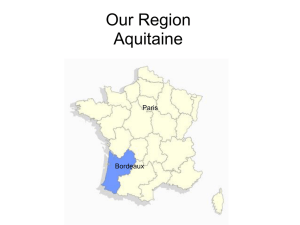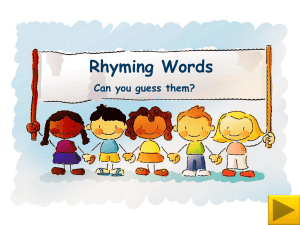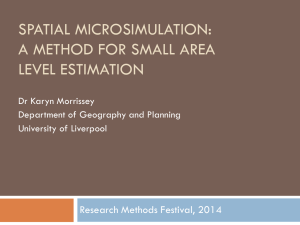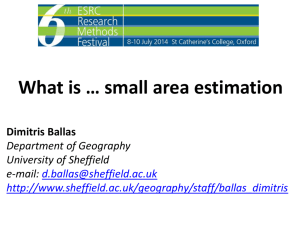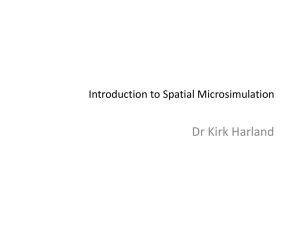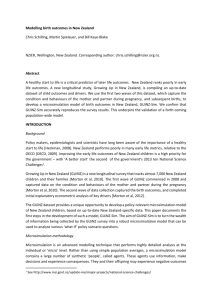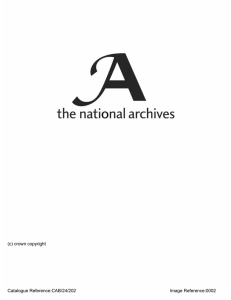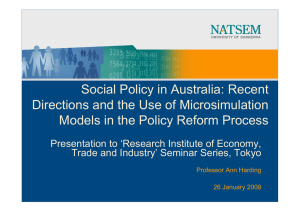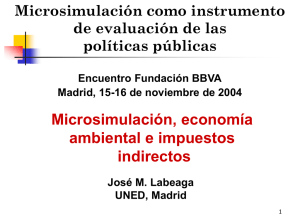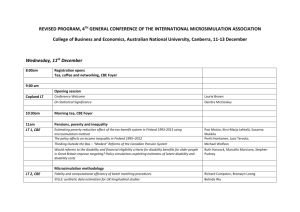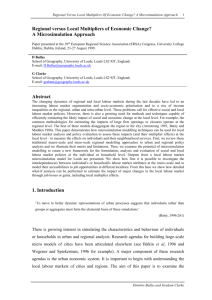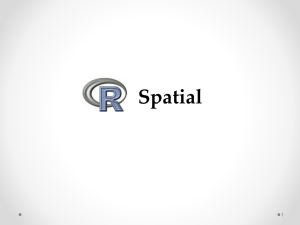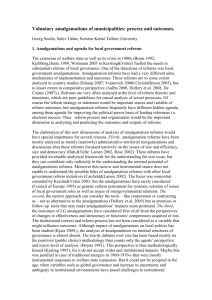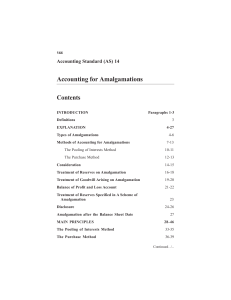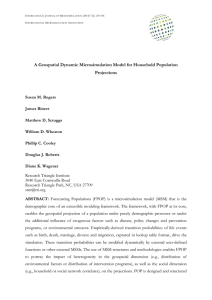Spatial Simulation for Education Policy Analysis in Ireland
advertisement
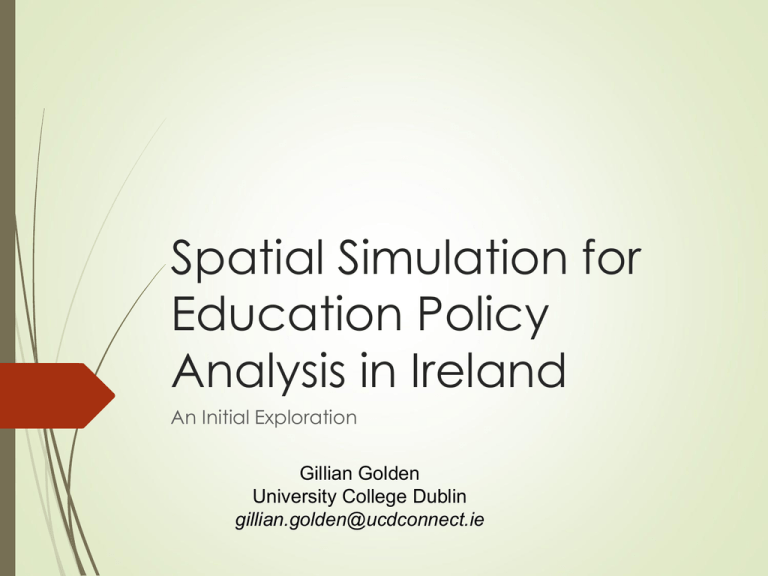
Spatial Simulation for Education Policy Analysis in Ireland An Initial Exploration Gillian Golden University College Dublin gillian.golden@ucdconnect.ie Overview Individual level modelling for policy analysis in the education sector – proof of concept exercise Exploiting statistical value of available administrative data and “Joined up data” – NSB Position Papers December 2011 Spatial component - important for planning and efficient resource provision. Microsimulation Representing a system in terms of it’s individual units. Often generated synthetically using fitting techniquesCensus small areas and PUMS Model effect of a policy change on individuals and aggregate the results Can provide a more insightful picture of a complex social system Example – Integration in Washington DC Spatial Microsimulation Statistical table Ethnic Group % White alone 42.90% Black or African American alone 50.10% American Indian and Alaska Native alone 0.60% Asian alone Hawaiian and Other Pacific Islander alone 3.80% Two or More Races 2.50% 0.20% Irish Education System Overall budget of €9 billion annually. Primary sector – approximately 3200 schools with 520,000 pupils Traditional macro analysis – Value for Money reviews, 2009 Special Group on Public Service Expenditure Can spatial microsimulation add value? Data Sources Irish Census of Population 2011 POWSCAR file Department of Education and Skills school XY coordinates Other school level data combined from databases held in the Department County Mayo chosen as test geographic area Methodology POWSCAR fuzzy northing and easting Primary school XY data Spatial Join Operation Result - Individual level data with contextual info on pupil’s home and school Data Cleaning Issues Spatial Join – primary schools located next to each other. Geographical information not “fine grained” enough. Alternative method to assign pupils to schools – optimisation “bin packing” algorithm School Census returns 2010-2011 used as “bin volume” Pupils assigned to schools according to school size. Primary and post-primary school co-located. Remove records at random. Data Cleaning- Bin Packing Algorithm Matched dataset – Irish Student Simulation Model (ISSIM) Rich Dataset Many Possibilities Comparison with Department of Education census records Simulating school Amalgamations Can examine hypothetical scenarios Example analysis – Close all schools with less than 50 pupils and reassign pupils to other schools Distance calculated based on point distance between school and randomly generated point in small area of residence School Amalgamations Variations in distance between home and school, indicator of active school choice. Proximity table of schools Pupils reassigned to school nearest the one attended before amalgamation “Before and After” analyses of the effects of the amalgamations School Locations Financial Effects Smaller schools have a higher unit cost Notional projected future cost of a teacher - €55,000 per annum Capitation grants for additional school level staff, school running costs etc Computation of cost before and after simulating the amalgamation Financial Effects Social Effects Socio-Economic “Equality” in schools DEIS Schools ISSIM useful for targeting resources aimed at alleviating educational disadvantage DEIS programme designated schools Community Effects Add value to qualitative analysis also Individual case studies possible Local “catchment area” of school Community effects of closure of small schools ISSIM can add information to contextual analysis – to what extent does the school serve the local community? Evaluation Comprehensive dataset Cost-effective insights compared to surveys Possibilities to convert from microsimulation to agentbased model by including records with uncoded place of school and assigning records to specific households From static to dynamic – enrolment and cost projections Evaluation Data protection - Dataset currently warehoused in Department of Education Strict access controls Published material based on POWSCAR must be approved by CSO. Next steps Expand the model to cover all of Ireland Develop standard “data cleaning” methodologies – cities may present additional validation issues. Examine some of the policy issues explored here in more detail – initial focus on policies affecting primary schools

![afl_mat[1]](http://s2.studylib.net/store/data/005387843_1-8371eaaba182de7da429cb4369cd28fc-300x300.png)



